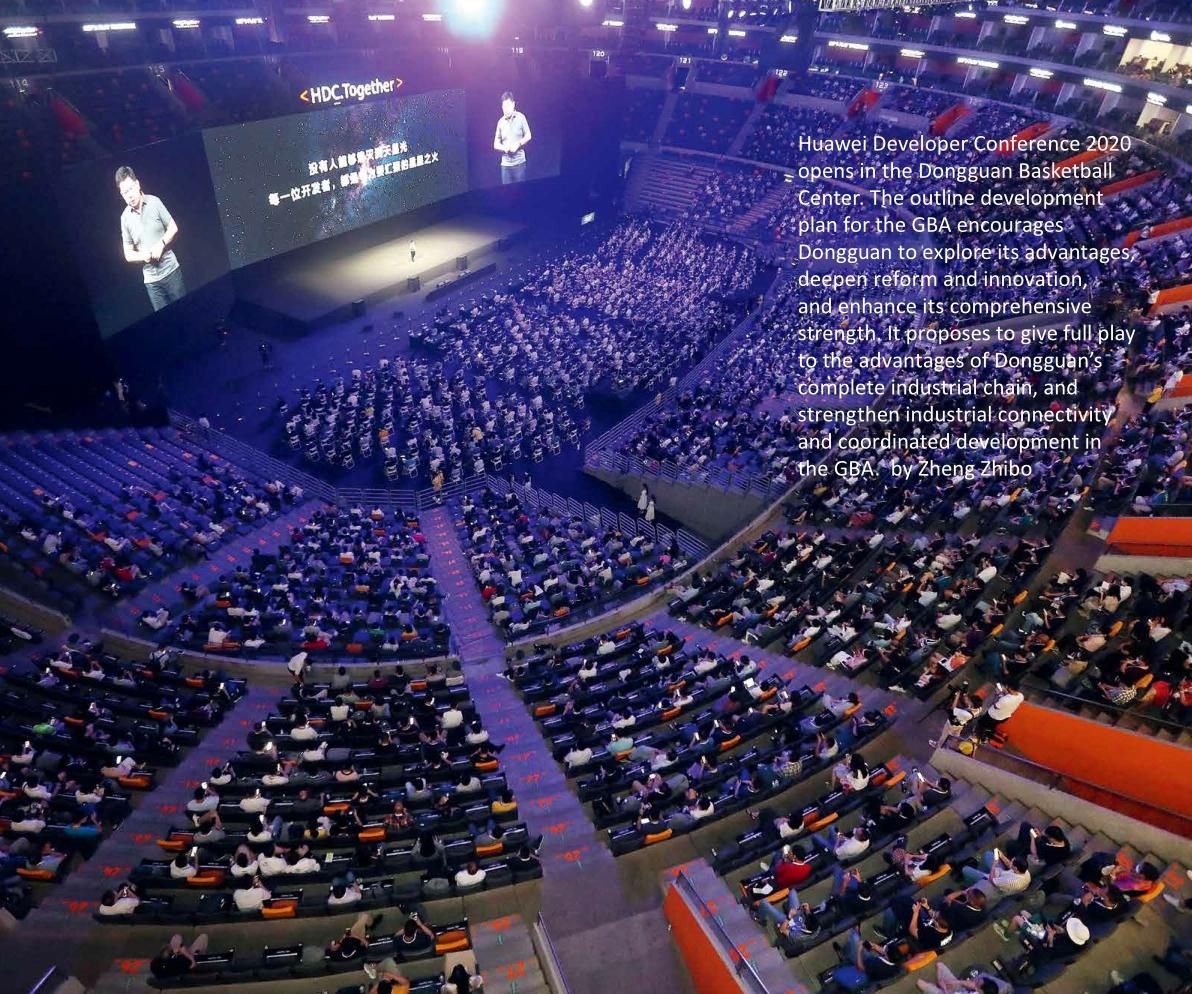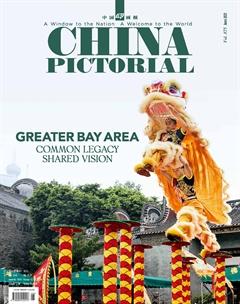China’s Greater Bay Area:The World’s Stage
by Jia Wenshan

Chinas Guangdong-Hong Kong-Macao Greater Bay Area, known as the Greater Bay Area or GBA for short, has been attracting entrepreneurs, scientists, social and civil engineers, and venture capitalists from across the country and even the rest of the world since the release of the GBA development plan two years ago.
This area is remembered both for being partially under British and Portuguese colonial rule in the past and a torchbearer in pioneering Chinas reform and opening up in the past four decades. The famous southern tour of the late Chinese leader Deng Xiaoping drew attention to the area in early 1992 when he visited cities in Guangdong. Shenzhen, originally a small fishing village, has grown into a modern city with an economy bigger than Hong Kongs. It is now nicknamed Chinas Silicon Valley and hosts world-class Chinese tech companies such as Huawei, Tencent and DJI.
Chinese President Xi Jinpings 2012 southern tour followed Deng Xiaopings with stops in the four cities of Shenzhen, Zhuhai, Foshan and Guangzhou. It served as a prelude to a new shift in Chinas reform and opening up that birthed the idea of the GBA. The Outline Development Plan for the Guangdong-Hong Kong-Macao Greater Bay Area was unveiled in February 2019 as the U.S. was beginning to decouple from China, fearing Chinas rise and eventual overtaking. It was also when Industry 4.0 was reaching a new height of development. Industry 4.0 has driven a technological synthesis of the internet of things, AI, and blockchain, creating the power to forge deeper integration of all information, all things, and all peoples and cultures. All these factors were technically conducive to the construction of the Greater Bay Area.
Big challenges remain to reach the goals of the development plan, such as integrating all these areas into a single fully functioning common market, and creating a new model of modernization for other regions of China to follow.
The three regions also have major differences including the socialist system adopted by Guangdong and the capitalist one adopted by Hong Kong and Macao. Three separate customs regimes and three currencies, the renminbi, Hong Kong dollar, and Macanese pataca, are still in use. Each of these three regions uses a distinct legal system. Such factors hinder the smooth integration of all the three into a single common market. Overcoming such differences would demand extraordinary wisdom and talent and take time and money.
Few global bay areas can be found to serve as a model for this project. The New York Bay Area on the East Coast of the U.S. began thriving with the first wave of industrialization and later embraced the financial industry. The San Francisco Bay Area on the West Coast of the U.S. boomed by inventing the third industrialization—the internet. The Tokyo Bay Area in Japan prospered through a localized hybrid of the various waves of industrialization in Western countries like Germany, the UK and the U.S.
The GBAs economic development patterns have not yet differed from the basic formula of developed economies such as European countries, the U.S., Japan, and Singapore and their definitions of modernization. In the current era, however, continuing to emulate other models is hardly sustainable, especially as they start to run out of steam. This means that the development of Chinas GBA must be original in terms of both institutional and technological innovation. This presents quite a challenge if the worlds most technologically advanced country, the U.S., is decoupling from China and attempting to stop the nations peaceful rise.
Despite such obstacles, the future of the GBA still looks bright for three key reasons: First, the development plan was built on a morally superior philosophy and a sound vision for the future. Both the New York Bay Area development model embodied by Wall Street and the San Francisco Bay Area development model embodied by Silicon Valley are based on a libertarian or neoliberal vision of globalization, which privileges capitalists interest and undermines the legitimate interests of the common people and the legitimate functions of the nation-state.
Even if they have been financially prosperous, these models must be held accountable for the drastic economic inequality both in the U.S. and the rest of the world. They have essentially driven the American model of globalization to the end of its track, where it is now stuck in a corner with little room to reinvent any wheels. The Tokyo Bay Area development model was rooted in Japans desire to achieve wealth and power in Asia and display its successes globally. It is mostly a nationalist model which has been losing its luster and gathering dust.
It would be wise for the GBA development model to avoid its predecessorspitfalls while adopting some of the strong points of these models such as mechanisms for innovation and management styles. The GBA has embraced the philosophy of inclusion and equity and seeks progress towards the vision of building a global community of shared future while at the same time serving the countrys goals of achieving basic socialist modernization by 2035 and becoming a great modern socialist country by 2050. With this strategic goal in mind, instrumental values such as critical thinking, innovation and creativity, competitiveness and cooperativeness in individuals, groups and institutions should be cultivated and rewarded to foster a more progressive and humane development model. Development of the GBA is motivated by a morally superior philosophy, a careful vision, and strong support from the central government.
Second, all the areas in the GBA are blessed with shared cultural identity—the Lingnan culture—and shared values of authenticity, open-mindedness, tolerance and appreciation for diversity. The GBA has been one of the hottest destinations for migrants from China, the rest of Asia, and other parts of the world. Of all the regions in China, Guangdong, Hong Kong and Macao are home to the most descendants of people from other parts of China. Shenzhen, for example, is a living contemporary mecca for immigrants, and has nurtured an environment full of vitality and conducive to creativity and innovation.
Third, the GBA is witnessing a rising cluster of higher education institutions. It is home to about 100 institutions of higher education. Many are world-class or top Asian universities such as the University of Hong Kong, the Chinese University of Hong Kong, the Hong Kong University of Science and Technology, Sun Yat-sen University, Shenzhen University, and University of Macau. These schools have been educating thousands of highly talented youths to meet the labor demands of the GBA while also acting as a GBA network for research labs and incubators of new ideas, patents, and products. Even though development of the GBA still faces challenges, it enjoys great potential thanks to various favorable conditions.
While prioritizing hard and soft infrastructure integration of the three parties, aligning the development plan with other initiatives such as the Yangtze River Delta Development Plan, the Yellow River Belt Project and the Belt and Road Initiative would be conducive to building an Asian community and even a global community of shared future. The Greater Bay Area is a great theater begging for a greater new play.

